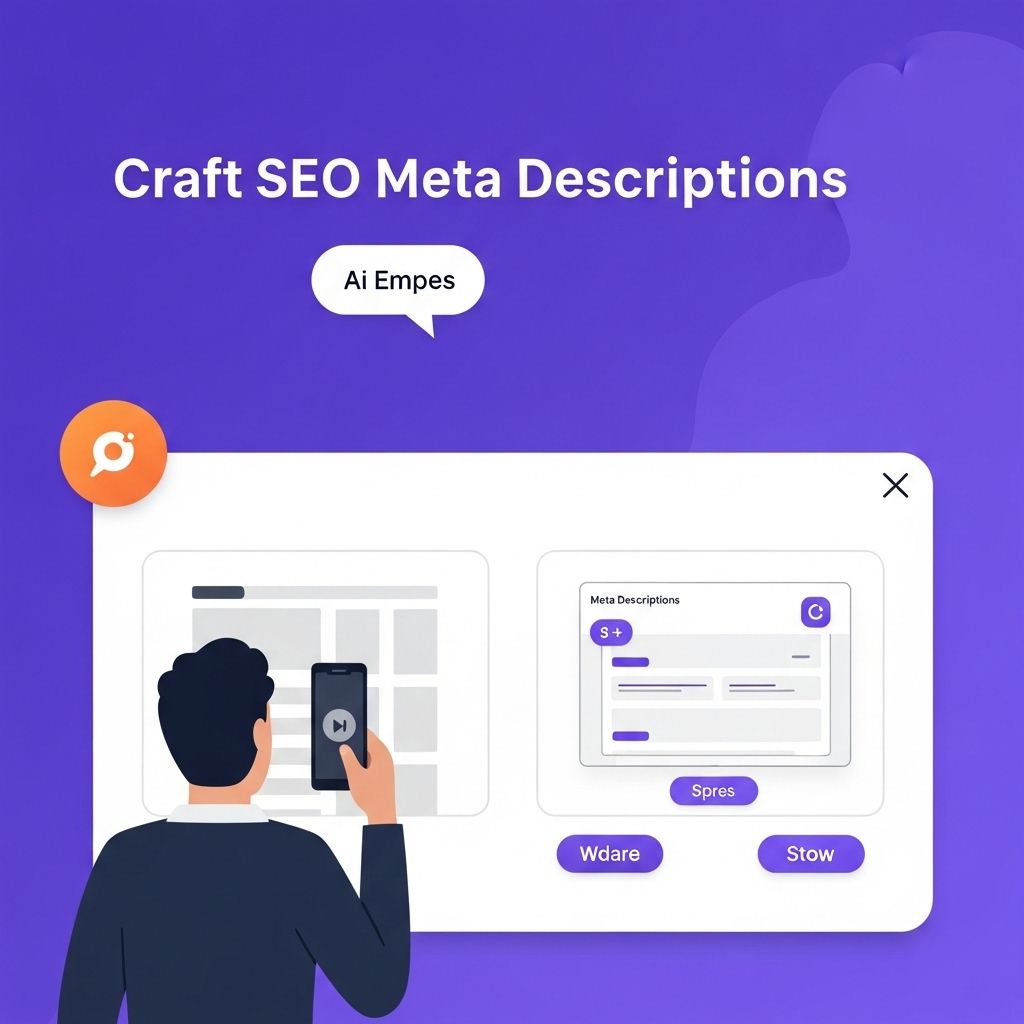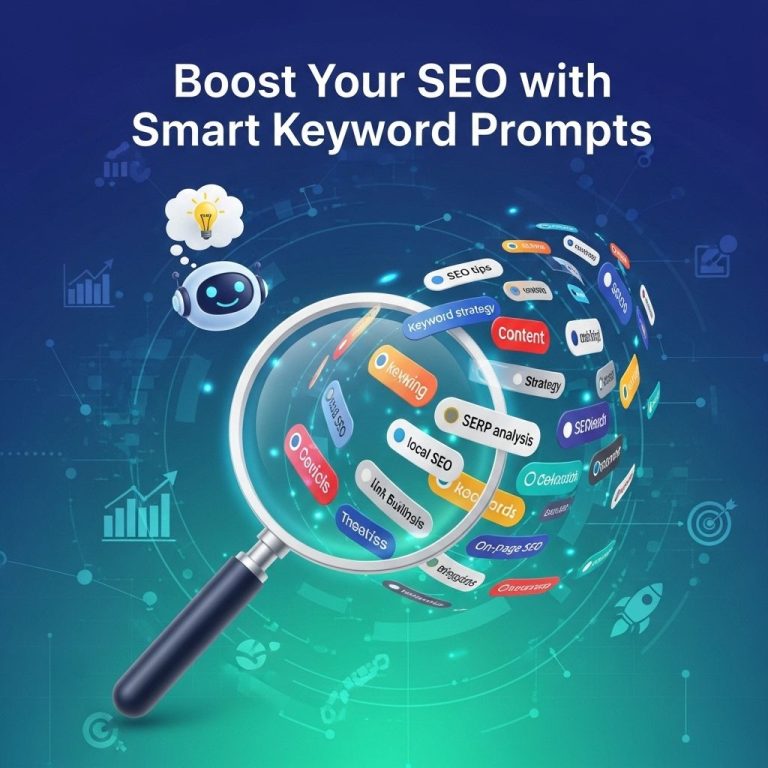In the digital age, the importance of SEO (Search Engine Optimization) cannot be overstated. Every business, whether large or small, relies on being visible online to attract customers. One critical aspect of SEO is crafting effective meta descriptions. These snippets appear in search engine results and can significantly influence click-through rates. With advancements in AI, generating compelling meta descriptions has become easier and more efficient. In this article, we will explore how to leverage AI prompts to enhance your SEO strategy by creating persuasive meta descriptions.
What is a Meta Description?
A meta description is an HTML attribute that provides a brief summary of a webpage’s content. Search engines like Google display this summary in search results, usually below the page title. Here are key points about meta descriptions:
- Typically between 150-160 characters.
- Should accurately reflect the content of the webpage.
- Incorporate relevant keywords to improve SEO.
- Act as a marketing tool to encourage users to click on the link.
The Significance of Meta Descriptions in SEO
Meta descriptions play a pivotal role in SEO for several reasons:
- Enhances Click-Through Rates: A well-crafted meta description can attract more visitors by providing a compelling reason to click through.
- Increases Visibility: Search engines may use meta descriptions to determine the relevance of a page in relation to a user’s query.
- Improves User Experience: Clear and concise descriptions help users understand what to expect from a page, reducing bounce rates.
The Role of AI in Crafting Meta Descriptions
Artificial Intelligence has transformed numerous industries, and SEO is no exception. AI can assist in crafting effective meta descriptions through:
Automated Generation
AI tools can analyze the content of your webpage and generate meta descriptions that encapsulate the main ideas succinctly. This saves time and ensures consistency across various pages.
Keyword Optimization
AI can help identify relevant keywords based on trending searches, enabling the creation of meta descriptions that align with SEO best practices.
Performance Analysis
Some AI tools provide insights and analytics on the performance of your meta descriptions, allowing for continuous improvement and optimization.
Steps for Crafting Meta Descriptions with AI Prompts
To effectively use AI for generating meta descriptions, follow these structured steps:
Step 1: Identify Your Target Keywords
Before using AI, conduct keyword research to identify the most relevant terms for your content. Tools like Google Keyword Planner or SEMrush can be helpful.
Step 2: Choose an AI Tool
Select an AI tool that specializes in content generation. Some popular AI content generators include:
| Tool | Features |
|---|---|
| Jarvis (Jasper) | Natural language processing, customizable outputs. |
| Copy.ai | User-friendly, multiple templates available. |
| Writesonic | Multiple language support, SEO-focused templates. |
Step 3: Input Your Content
Feed your chosen AI tool with the primary content of your webpage. It’s essential to give the AI enough context to generate a relevant meta description.
Step 4: Generate and Refine
Use the AI prompt to generate multiple meta descriptions. Evaluate them based on clarity, engagement, and keyword inclusion. Choose the best options and, if necessary, refine them further.
Step 5: Test and Measure Performance
Once implemented, monitor the performance of your meta descriptions using Google Analytics. Evaluate metrics such as:
- Click-through rates (CTR)
- Bounce rates
- Average session duration
Best Practices for Meta Descriptions
To maximize the effectiveness of your meta descriptions, adhere to the following best practices:
Keep It Concise
Stay within the character limit (150-160 characters). Use clear, concise language that gets straight to the point.
Be Descriptive and Compelling
Provide a snapshot of what the user will find on the page. Use active voice and persuasive language to encourage clicks.
Incorporate a Call to Action
Encourage users to take action with phrases like:
- “Learn more”
- “Discover…”
- “Get started now”
Test Different Variations
Utilize A/B testing to experiment with different meta descriptions and measure which versions yield better results.
Common Mistakes to Avoid
When crafting meta descriptions, be wary of the following pitfalls:
- Keyword Stuffing: Overloading meta descriptions with keywords can lead to penalties from search engines.
- Generic Descriptions: Avoid vague phrases that do not provide value or context.
- Ignoring Mobile Users: Ensure that the meta description is effective for users on mobile devices, as searches on mobile continue to rise.
Conclusion
Crafting effective meta descriptions is a critical element of SEO that can significantly impact your website’s visibility and user engagement. With the help of AI, creating these descriptions can be streamlined and optimized for better performance. By following the outlined steps and best practices, businesses can enhance their online presence and attract more visitors through well-crafted meta descriptions. Embrace the future of SEO with AI-driven solutions to stay ahead in the competitive digital landscape.
FAQ
What is an SEO meta description?
An SEO meta description is a short summary of a webpage’s content, typically between 150-160 characters, that appears in search engine results below the page title.
How can AI help in creating meta descriptions?
AI can assist in generating optimized meta descriptions by analyzing keywords, understanding user intent, and creating concise, engaging summaries that improve click-through rates.
What are the best practices for writing meta descriptions?
Best practices include using target keywords, maintaining a character limit of 150-160, writing compelling calls to action, and ensuring uniqueness for each page.
Why are meta descriptions important for SEO?
Meta descriptions help improve search visibility and click-through rates by providing users with a preview of the content, influencing their decision to visit the page.
Can AI generate unique meta descriptions for multiple pages?
Yes, AI can generate unique meta descriptions for multiple pages by analyzing the specific content and keywords of each page to create tailored summaries.
How often should I update my meta descriptions?
It’s advisable to update meta descriptions periodically, especially when content changes or to improve SEO performance based on analytics insights.




